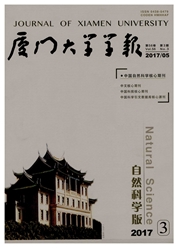

 中文摘要:
中文摘要:
在过去的十年,在在水的动物的金属的全面 bioaccumulation 的饮食的暴露的意义的量的识别是在金属 ecotoxicology 的主要进步的一个区域。在象食肉动物那样的海洋的动物和喂存款的动物的几个主要的组,饮食(食物) 是为金属累积的占优势的来源。营养的转移的重要性关于它的毒性提出很基本的问题到水的动物并且在给水超出水运的金属暴露的质量标准。包括浮游动物和鱼,十年关于在几组水的动物的金属的饮食的毒性的研究被考察。它被建议未来研究应该试图在毒物学实验的设计合并剂量率或饮食的流入率便于不同研究的结果内部比较。
 英文摘要:
英文摘要:
Over the past decade, the quantitative recognition of the significance of dietary exposure in the overall bioaccumulation of metals in aquatic animals has been an area of major progress in metal ecotoxicology. In several major groups of marine animals such as predators and deposit-feeding animals, diet (food) is the predominant source for metal accumulation. The importance of trophic transfer raises very fundamental questions about its toxicity to aquatic animals and in setting water quality standards which go beyond waterborne metal exposure. Ten years of research on the dietary toxicity of metals in several groups of aquatic animals, including zooplankton and fish, is reviewed. It is suggested the future studies should attempt to incorporate the dosage rate or the dietary influx rate in the design of toxicology experiments to facilitate inter-comparison of the results of different studies.
 同期刊论文项目
同期刊论文项目
 同项目期刊论文
同项目期刊论文
 期刊信息
期刊信息
